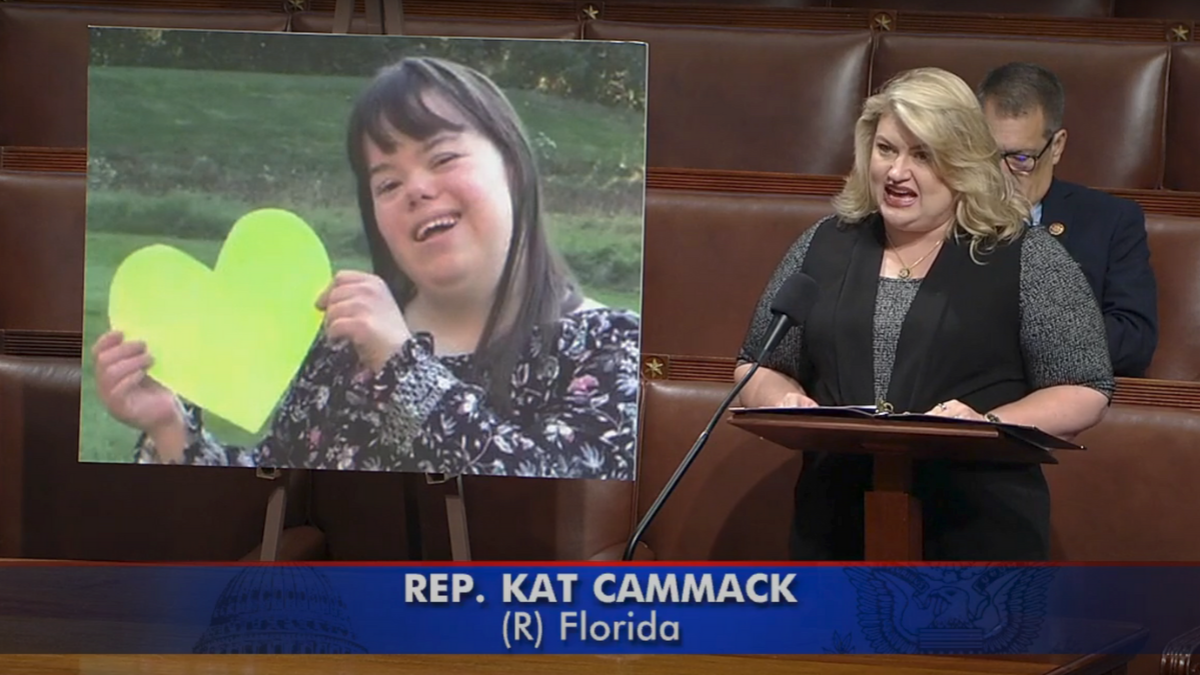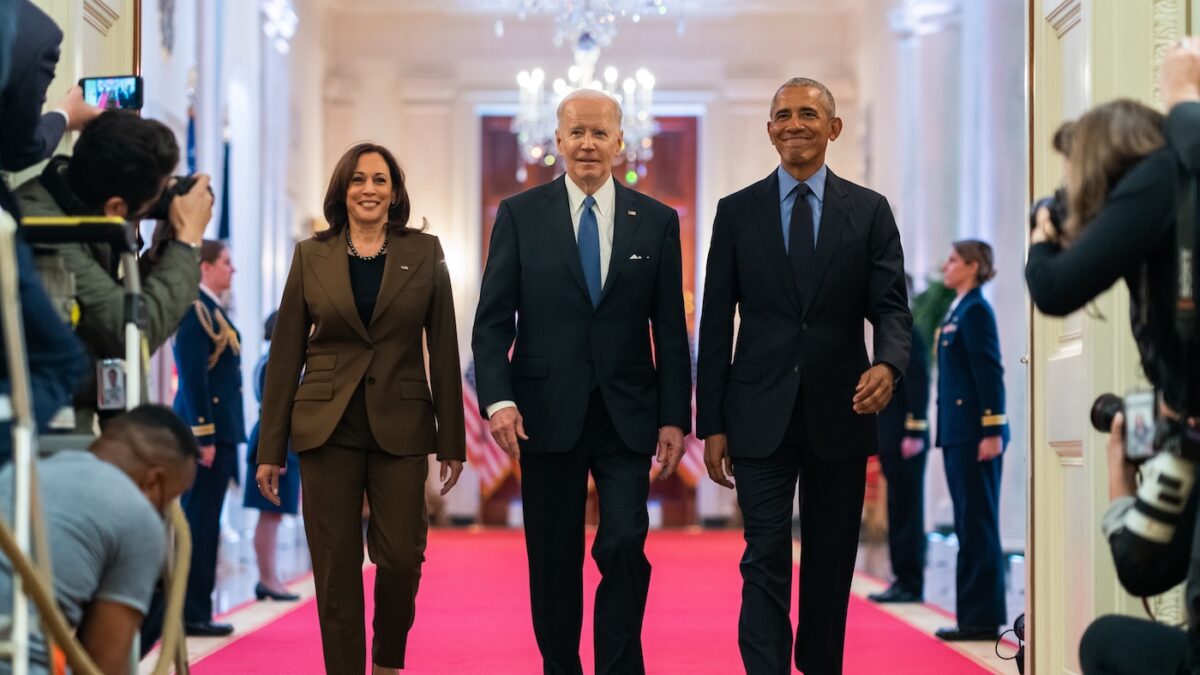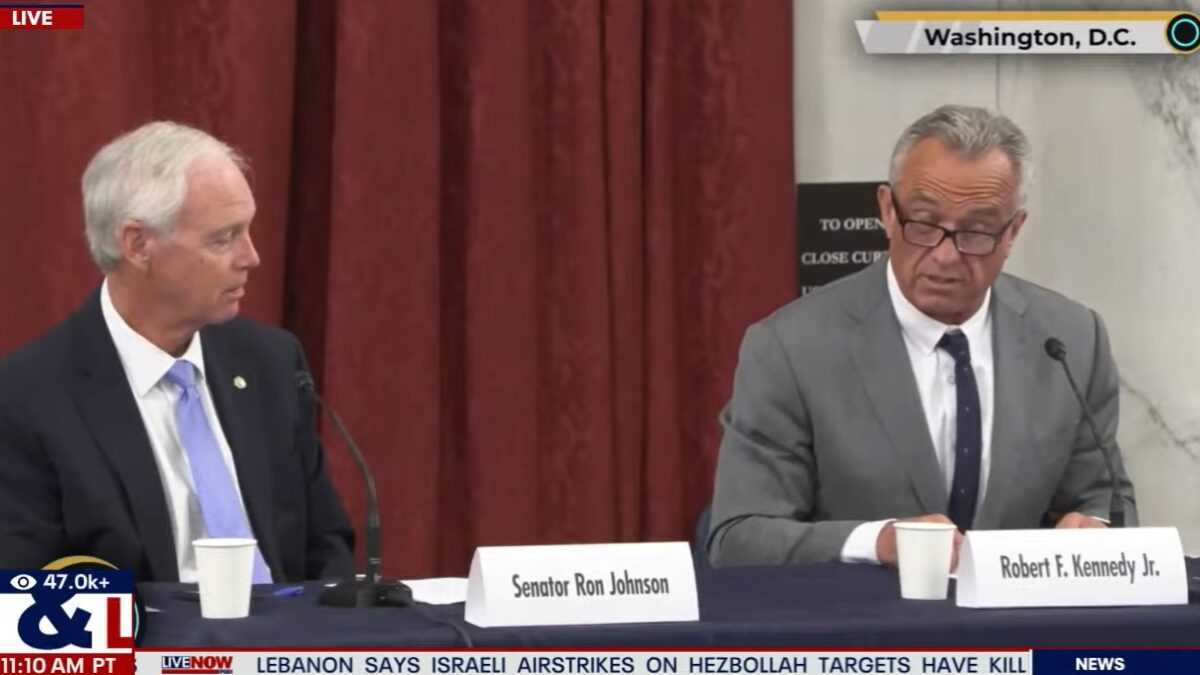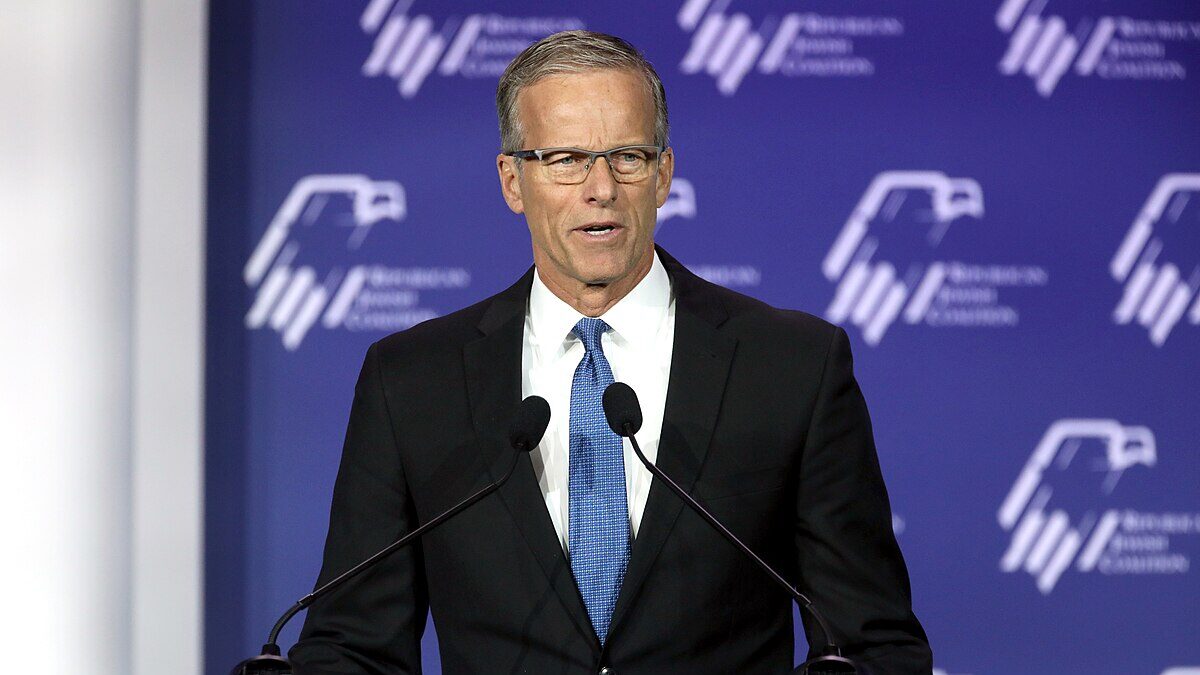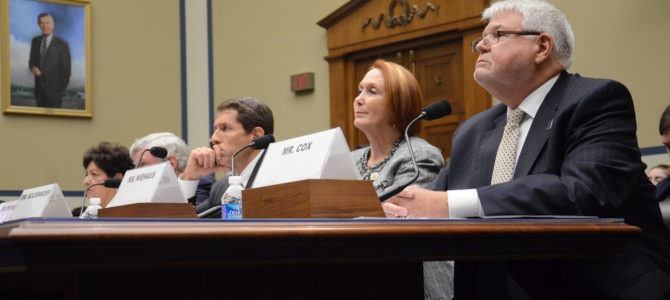
What if a group of regulators were collectively blindsided by a decision that cost their industry billions of dollars? One might think Congress would investigate the causes of this regulatory debacle, and take steps to ensure it wouldn’t repeat itself.
Think again. President Trump’s October decision to terminate cost-sharing reduction (CSR) subsidy payments to health insurers will inflict serious losses on the industry. For October, November, and December, insurers will reduce deductibles and co-payments for certain low-income exchange enrollees, but will not receive reimbursement from the federal government for doing so. America’s Health Insurance Plans, the industry’s trade association, claimed in a recent court filing that insurance carriers will suffer $1.75 billion in losses over the remainder of 2017 due to the decision.
When health insurers filed their rates for 2017, not a single insurance commissioner assumed, let alone contemplated, that the incoming presidential administration could cancel the cost-sharing subsidies. Their lack of planning and preparation left millions of consumers—to say nothing of health insurers themselves—exposed.
As Dave Anderson of Duke University recently noted, the “hand grenade” of stopping the cost-sharing reduction payments, “if it was thrown in January or February of this year, would have forced a lot of carriers to do midyear exits and it would have destroyed the exchanges in some states.” Yet Congress has asked not even a single question of regulators why they did not anticipate and plan for this scenario—a recipe for more costly mistakes in the future.
A Brewing Legal and Political Storm
The controversy surrounds federal payments that reimburse insurers for lower deductibles, co-payments, and out-of-pocket expenses for qualifying low-income households purchasing exchange coverage. While the text of Obamacare requires the U.S. Department of Health and Human Services to establish a program to reimburse insurers for providing the discounts, it nowhere includes an explicit appropriation for such spending.
As the exchanges launched in 2014, the Obama administration began making CSR payments to insurers. However, later that year, the House of Representatives, viewing a constitutional infringement on its “power of the purse,” sued to stop the executive from making the payments without an explicit appropriation. In May 2016, Judge Rosemary Collyer ruled the payments unconstitutional absent an express appropriation from Congress.
Although Collyer stayed her ruling as the Obama administration appealed, President Trump used her ruling—and the legal reasoning behind the House’s lawsuit—as justification to halt the insurer payments. While Trump had threatened to terminate the payments weeks before doing so, the prospect of insurers losing access to CSR payments was predictable—and predicted—more than one year ago. Last May, I posed “the $9 billion question those insurers that remain on the [exchanges in 2017] ought to consider: What happens if Donald Trump is elected—and cuts off their access to Obamacare cost-sharing subsidies?”
The next President could easily wade into this issue. Say a Republican is elected and he opts to stop the Treasury making payments related to the subsidies absent an express appropriation from Congress. Such an action could take effect almost immediately….It’s a consideration as carriers submit their bids for next year that come January 2017, the policy landscape for insurers could look far different.
One week after my article, Collyer issued her ruling calling the subsidy payments unconstitutional. At that point, CSR payments faced threats from both the legal and political realms. On the legal front, the ongoing court case could have resulted in an order terminating the payments. On the political side, the new administration would have the power to terminate the payments unilaterally—and it does not appear that either Hillary Clinton or Trump ever publicly committed to maintaining the payments upon taking office.
Yet Commissioners Stood Idly By
In the midst of this gathering storm, what actions did insurance commissioners take last year, as insurers filed their rates for the 2017 plan year—the plan year currently ongoing—to analyze whether cost-sharing payments would continue, and the effects on insurers if they did not? About a week before the Trump administration officially decided to halt the payments, I submitted public records requests to every state insurance commissioner’s office to find out.
Two states (Indiana and Oregon) are still processing my requests, but the results from most other states do not inspire confidence. Although a few states (Illinois, Utah, and California’s Department of Managed Health Care) withheld documents for confidentiality or logistical reasons, I have yet to find a single document during the filing process for the 2017 plan year contemplating the set of circumstances that transpired this fall—namely, a new administration cutting off the CSR payments.
Why did hundreds, if not thousands, of regulators across the country fail to anticipate or consider a scenario that was predicted months in advance? Why did insurance commissioners presume—in many cases, without leaving so much as a single document questioning the assumption—that actions that a federal court had already ruled unconstitutional, albeit stayed pending appeal, would continue in perpetuity?
In many cases, states indicated they did not, and do not, question insurers’ assumptions at all. North Dakota said it does not dictate terms to carriers (although the state did not allow carriers to re-submit rates for the 2018 plan year after the administration halted the CSR payments in October). Wyoming said it did not issue guidance to carriers on CSRs “because that’s not how we roll.” Missouri did not require its insurers to file 2017 rates with regulators, so it would have no way of knowing those insurers’ assumptions.
Other states admitted that they did not consider the possibility that the incoming administration would, or even could, terminate the CSR payments. North Carolina said it did not think the court case was relevant, or that cost-sharing reduction payments would be an issue. Massachusetts’ insurance Connector (its state-run exchange) responded that “there was no indication that rates for 2017 were affected by the pendency of House v. Burwell,” the case Collyer ruled on in May 2016.
Despite the ongoing court case and the deep partisan disputes over Obamacare, many commissioners’ responses indicate a failure to anticipate difficulties with cost-sharing reduction payments. Mississippi stated that, during the filing process for 2017, “CSRs weren’t a problem then, as they were being funded.” Minnesota added that “it was not until the spring of 2017 that carriers started discussing the threat [of CSR payments being terminated] was a real possibility.” Nebraska stated that “I don’t think that there’s anyone who allowed for the possibility of non-payment of CSRs for plan year 2017. We were all waiting for Congress to act.”
A few states attempted to take action, but in ways contrary to federal law. The week after Collyer’s ruling in House v. Burwell, New Mexico issued a bulletin allowing carriers to insert a contingency in their plan year 2017 filings. The contingency would have permitted insurers to stop lowering cost-sharing for beneficiaries if the federal government stopped reimbursing them for these cost-sharing reductions. Texas proposed a similar change the week before Collyer’s ruling.
However, as an e-mail sent by the National Association of Insurance Commissioners (NAIC) to state regulators demonstrates, federal authorities at the Centers for Medicare and Medicaid Services (CMS) stated their “serious concerns” with the Texas and New Mexico proposals. Federal law requires insurers to reduce cost-sharing for qualifying beneficiaries, regardless of the status of the reimbursement program, and CMS believed the contingency language—which never went into effect in either Texas or New Mexico—violated that requirement.
In at least one case, an insurer raised premiums to reflect the risk that CSR payments could disappear in 2017. Blue Cross Blue Shield of Montana submitted such request to that state’s insurance authorities. However, regulators rejected “contingent CSR language”—apparently an attempt to cancel the reduced cost-sharing if reimbursement from Washington was not forthcoming, a la the Texas and New Mexico proposals. The insurance commissioner’s office also objected to the carrier’s attempt to raise premiums over the issue: “We will not allow rates to be increased based on speculation about outcomes of litigation.”
Of course, had insurers requested, or had regulators either approved or demanded, premium increases last year due to uncertainty over cost-sharing reduction payments, they would not now face the prospect of over $1 billion in losses due to non-payment of CSRs for the last three months of 2017. But had regulators approved even higher premium increases last year, those increases likely would have caused political controversy during the November elections.
As it was, news of the average 25 percent premium increase for 2017 gave Trump a political cudgel to attack Clinton in the waning days of the campaign. One can certainly question why Democratic insurance commissioners who did not utter a word about premium increases and CSR “uncertainty” during Clinton’s campaign suddenly discovered the term the minute Trump was elected president.
However, at least some ardent Obamacare supporters just did not anticipate a new administration withdrawing cost-sharing reduction payments. Washington state’s commissioner, Mike Kreidler, published an op-ed last October regarding the House v. Burwell court case. He did so at the behest of NAIC consumer representative Tim Jost, who wanted to cite Kreidler’s piece in an amicus curiae brief during the case’s appeal. But despite their focus on the court case regarding CSRs, it appears neither Jost nor Kreidler ever contemplated a new administration withdrawing the payments in 2017.
Congressional Oversight Needed
The evidence suggests that not a single insurance commissioner considered the impact of a new administration withdrawing cost-sharing reduction payments in 2017, a series of decisions that put the entire health of the individual insurance market at risk. What policy implications follow from this conclusion?
First, it undercuts the effectiveness of Obamacare’s “rate review” process. That mechanism requires states to evaluate “excessive” premium increases. However, the program’s evaluation criteria do not explicitly include policy judgments such as those surrounding CSRs. Moreover, the political focus on lowering “excessively” high premium increases might result in cases where regulators approve premium rates set inappropriately low—as happened in 2017, where no carriers priced in a contingency margin for the termination of CSR payments, yet those payments ceased in October.
As noted above, Montana’s regulators called out that state’s Blue Cross Blue Shield affiliate for proposing a rate increase relating to CSR uncertainty. The state’s insurance commissioner, Monica Lindeen, issued a formal “letter of deficiency” in which she stated that “raising rates on the basis of this assumption [i.e., loss of cost-sharing reduction payments] is unreasonable.” But events proved Lindeen wrong—those payments did disappear in 2017. Yet the insurer in question has no recourse after their assumptions proved more accurate than Lindeen’s—nor, for that matter, will Lindeen face any consequences for the “unreasonable” assumptions she made.
Second, it suggests an inherent tension between state authorities and Washington. Several regulators specifically said they looked to CMS’ advice on the cost-sharing reduction issue. Iowa requested guidance from Washington, and Wisconsin said the status of the payments was “out of our hands.” But given the impending change of administrations, any guidance CMS provided in the spring or summer of 2016 was guaranteed to remain valid only through January 20, 2017—a problem for regulators setting rates for the 2017 plan year.
Obamacare created a new layer of federal oversight—and federal policy—surrounding regulation of insurance, which heretofore had laid primarily within the province of the states. The CSR debacle resulted from the conflict between those two layers. Unless and until our laws reconcile those tensions—in conservatives’ case, by repealing the Obamacare regime and returning regulation to the states, or in liberals’ preferred outcome, by centralizing more regulatory authority in Washington—these conflicts could well recur.
Third, and perhaps most importantly, it should spark Congress to examine state oversight of health insurance in greater detail. The fact that insurance commissioners escaped the equivalent of a Category 5 hurricane—the withdrawal of CSR payments in January—and struggled through a mere tropical storm with payments withdrawn in October instead, had no relevance on their regulatory skill—to the contrary, in fact.
Unfortunately, Congress has demonstrated little interest in examining why the regulatory apparatus fell so short. The same Democratic Party that investigated regulators and bankers following the financial crisis has shown little interest in questioning why insurers and insurance regulators failed to anticipate the end of cost-sharing reduction payments. With their focus on getting Congress to appropriate funds restoring the CSR payments President Trump terminated, insurance commissioners’ lack of planning and preparation represents an inconvenient truth that Democrats would rather ignore.
Likewise, Republicans who wish to appropriate funds for the cost-sharing reduction payments have no interest in examining the roots of the CSR debacle. In September, Sen. Lamar Alexander (R-TN) convened a hearing of the Health, Education, Labor, and Pensions (HELP) Committee to take testimony from insurance commissioners on “stabilizing” insurance markets.
At the hearing, Alexander did not ask the commissioners why they did not predict the “uncertainty” surrounding cost-sharing reductions last year. HELP Committee Ranking Member Patty Murray (D-WA) asked Kreidler, her state’s insurance commissioner, about regulators’ “guessing games” regarding the status of CSRs with regard to the 2018 plan year. But neither she nor any of the members asked why those regulators made such blind and ultimately incorrect assumptions last year, by not even considering a scenario where CSR payments disappeared during the 2017 plan year.
Alexander and Murray claim the legislation they developed following the hearing, which would appropriate CSR funds for two years, does not represent a “bailout” for the insurance industry. But the fact remains that last fall, when preparing for the 2017 plan year, insurance regulators dropped the ball in a big way.
Ignoring their inaction, and appropriating funds for cost-sharing reductions without scrutinizing their conduct, would effectively bail out insurance commissioners’ own collective negligence. Congress should think twice before doing so, because next time, a regulatory debacle could have an even bigger impact on the health insurance industry—and on federal taxpayers.
Mr. Jacobs is founder and CEO of Juniper Research Group, a policy consulting firm based in Washington. He is on Twitter: @chrisjacobsHC.



